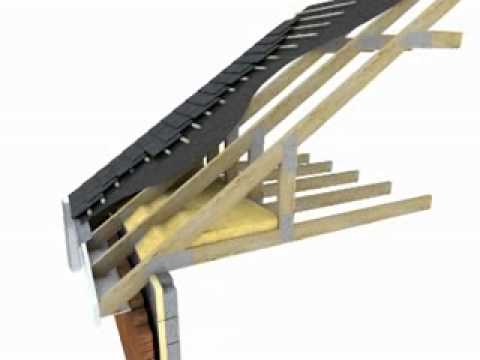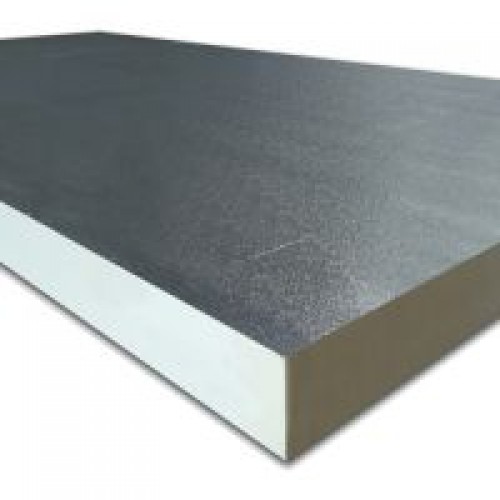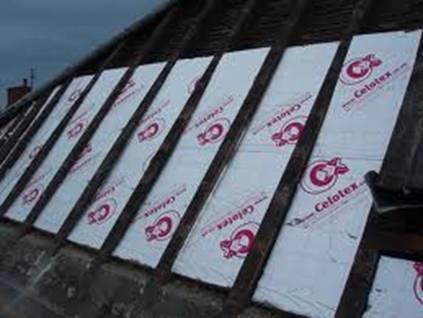Technical Guidance on Pitched Roof Insulation
Regulation, Ventilation and Insulation of Pitched Roofs
With summer approaching and temperatures rising, now would be the perfect time to consider adding some insulation to your roof which is a part of the construction under the direct influence of the weather conditions, read steaming sun rays that can be ruthless when the summer season is at its peak. Namely, if your roof is not properly insulated, you are risking not only heat loss but also heat gain within your home or your loft space, if there is one. If there is no loft separating your home interior from the roof, then the cold/hot air will flow directly into your home and affect the inner temperature, while if there is a loft space separating the roof from the interior, your loft space may become unusable due to high temperatures where common ventilation will not solve the problem. The insulation will depend on the type of your roof but what we will discuss here is technical guidance on pitched roof insulation.
Know Your Roof
The first thing you need to do prior to adding insulation to your pitched roof is determining the type of roof covering your home since this will determine the type and method of insulation. You don’t need a professional to help you do this but just go look at your roof. If you see two pieces that are joined at the top and falling down at a certain angle, you are dealing with a pitched roof. The pitch is actually the angle the two sides of the roof are set at. Thus, the roof can have a steam pitch which is common for colder regions in order of avoiding water accumulating and freezing on top and also creating some additional space under the roof, while shallow ones tend to create small, unusable spaces under the roof which is often avoided by raising the walls.

Some basic technical information about your pitch roof that you should be aware of and could be important for installing insulation include the roof rafter which is actually a support system for the roof covering (which is important for ventilation and position of insulation), battens which support the tiles and slats and a sarking board which separates the rafters from the roof covering.
Once you have determined all the above mentioned, there is another important difference that you will have to make in order of insulating your pitched roof properly. In case you are not having or simply not using the space under the roof, then you should add insulation at the ceiling level and thus create a so called cold roof construction. This means that you will cut off the interior from the roof space which will remain unheated. On the other hand, if you are planning on using your loft space, then you should probably opt for a warm pitched roof construction where the insulation is placed over, under or between the roof rafters.
Know Your Roof Insulation
There are a few things to pay attention to when insulating your pitched roof. Firstly is the choice of insulation material. If making a warm pitched roof construction, you should opt for some type of rigid insulation boards such as Kingspan K7 pitched roof board orCelotex XR4000 PIR insulation boards, which can be installed both between and over the rafters and offers a level of fire resistance, if important and applicable. Please note that these boards require a breather membrane over the insulation if installed over the rafters and a vapour control layer if installed between the rafters.

This brings us to a very important technical issue concerning pitched roof insulation and refers to proper ventilation and breathability of the construction. Please note that a minimum of 50mm ventilation is required under the sarking felt while a drape space should be left under a breather membrane. Another important thing that you should remember is that any construction element that you place on the outer side of a ventilated space will not be affected in the words of its U value. Finally, if you want to deal with potential moisture and condensation problems, it is important to place the >vapour control layer> on the warm side of installed pitched roof insulation.
As for the installation advice, note that chosen insulation material can be added over the roof rafters but then you should make sure to incorporate a breather membrane and counter batten, whereas the outer layer thickness should correspond to the thickness of the in-between layer, in order of fighting moisture and condensation. Also, the insulation can be added either at the ceiling level or the pitch which could contribute to the airtightness of the building envelope.

Final thing you should pay attention to when adding pitched roof insulation is the quality of the chosen insulation material (through BBA certificates) and its ability to conform to the values prescribed by applicable Building Codes. According to the UK Building regulations, pitched roofs should achieve the U value of 0.18 W/m2, depending on the circumstances.
Improve your home insulation with our high-quality insulation products. Call us today, visit our online store or contact us for assistance by email.

















































































































